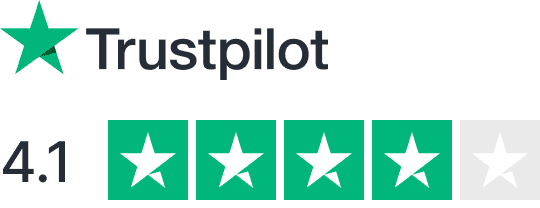Outsourcing developers and designers? Measure their performance effectively with role-specific KPIs. For developers, track code quality, project speed, and bug rates. For designers, focus on design quality, user experience, and timely delivery. Tools like GitHub, Jira, and Figma streamline this process, while frameworks like CareMinds‘ offer tailored metrics and automated tracking for real-time insights. Here’s what you need to know:
- Developers’ Key Metrics: Test coverage, sprint completion, bug resolution time.
- Designers’ Key Metrics: UX adherence, revision frequency, client feedback.
- Challenges: Avoid over-reliance on numbers – balance data with human evaluations.
Use these KPIs to align team performance with project goals, ensuring measurable outcomes and efficient global collaboration.
Related video from YouTube
1. CareMinds KPI System

CareMinds takes a tailored approach to managing outsourced talent, setting itself apart from standard industry practices. Its KPI framework evaluates both technical skills and delivery outcomes, focusing on role-specific metrics aligned with industry benchmarks. Below, you’ll find detailed metrics and tools used for developers and designers.
For developers, the system tracks three key performance areas:
| Performance Area | Key Metrics | Measurement Tools |
|---|---|---|
| Code Quality | Test Coverage, Code Review Ratings | GitHub, Bitbucket |
| Project Delivery | Sprint Completion, Timely Delivery | Jira, Trello |
| Technical Skills | Bug Resolution Time, Documentation Quality | Custom Assessment Tools |
For designers, both quantitative and qualitative metrics are considered:
| Performance Area | Key Metrics | Measurement Tools |
|---|---|---|
| Design Quality | UI/UX Standards Adherence, Design System Consistency | Figma, Adobe XD |
| Project Efficiency | Completion Rate, Revision Frequency | Project Management Platforms |
| Client Satisfaction | Design Feedback Scores, Implementation Success Rate | Client Feedback System |
The system goes beyond tracking individual performance by integrating with project management tools for automated data collection. This eliminates manual tracking and ensures consistent, real-time measurements.
A unified dashboard consolidates all key metrics, giving managers the ability to:
- Monitor progress against established benchmarks
- Spot bottlenecks early in the process
- Reallocate resources based on performance insights
- Track long-term improvement trends
CareMinds updates these metrics every quarter to keep the system relevant and effective for both short-term goals and long-term success.
2. Industry Standard KPIs
When it comes to outsourced talent, there are well-established benchmarks that help measure performance effectively. Here’s how CareMinds’ metrics align with broader industry standards.
For developers, the industry focuses on three key areas:
| Measurement Area | Key Metrics | Industry Benchmarks |
|---|---|---|
| Code Efficiency | Cyclomatic Complexity, Code Coverage | 85% test coverage; complexity score below 10 |
| Delivery Performance | Sprint Velocity, Lead Time | 2–4 week sprint cycles; lead time under 48 hours |
| Quality Assurance | Defect Density, Mean Time to Repair | Fewer than 0.1 defects per function point |
For designers, the focus shifts to measurable outcomes related to design and user experience:
| Measurement Area | Key Metrics | Industry Benchmarks |
|---|---|---|
| Design Efficiency | Time to First Design, Iteration Cycles | First design within 5 days; maximum of 2 revisions |
| User Experience | Task Success Rate, User Error Rate | Task completion rate over 85%; error rate under 5% |
| Design System Compliance | Component Reuse, Style Guide Adherence | Component reuse rate over 70% |
Balancing these quantitative metrics with qualitative insights leads to better results. Some of the important qualitative factors include:
- How well the design system evolves and adapts over time
- Strong client communication and relationship management
Automated weekly reviews and monthly trend analyses play a crucial role in spotting potential problems early, allowing for timely adjustments. This structured approach ensures smoother operations and better outcomes.
sbb-itb-a3fbb4e
KPI Systems: Benefits and Limitations
Understanding the strengths and weaknesses of KPI tracking systems helps in making smarter decisions about performance measurement. Below, we break down the unique advantages and challenges of different approaches, giving you a clearer picture of how KPIs influence technical and creative outcomes.
| Aspect | CareMinds Approach | Standard Industry Practice |
|---|---|---|
| Talent Quality Focus | Tracks individual developer/designer performance with a trial period | Relies on project-level metrics and team performance |
| Implementation Time | 3-day matching process with immediate KPI tracking | Traditional onboarding cycles |
| Flexibility | Metrics tailored to specific role requirements | Fixed, standardized metrics |
| Risk Management | Includes performance guarantees during the trial period | Standard contractual obligations |
| Cost Tracking | Transparent hourly rates ($31-$50/hour) | Project-based cost tracking |
These differences highlight how each system influences performance evaluation in practice.
Modern KPI systems excel at providing real-time insights, making it easier to adapt strategies quickly. But there’s a catch: automated tools often focus too much on numbers, potentially missing the bigger picture of qualitative factors.
For example, while tools can measure code quality or task completion rates, they can’t fully capture aspects like team collaboration or effective communication. That’s where human oversight becomes essential.
Common Challenges with KPI Systems
- Gathering accurate data from distributed teams
- Over-reliance on numbers, which can overshadow qualitative insights
- Difficulty in assessing soft skills like adaptability or creativity
To get the most out of KPI systems, organizations should aim for a balanced approach. Combine automated tracking with regular human evaluations. Set targets that are both realistic and aligned with industry benchmarks. Regularly reviewing and adjusting KPI thresholds ensures they stay relevant and achievable, driving meaningful improvement over time.
Conclusion
Role-based KPIs are powerful tools for evaluating and improving the performance of outsourced development and design teams. By focusing on data-driven analysis, businesses can achieve better results and manage costs more effectively.
Implementing these KPIs requires a thoughtful mix of measurable data and qualitative insights. While technical metrics like code quality and bug frequency provide hard numbers, it’s equally important to consider factors like communication and teamwork when evaluating performance.
Organizations that use modern KPI systems gain access to real-time data and adaptable tracking methods, helping them manage costs and align team efforts effectively.
To make the most of role-based KPIs, businesses should:
- Connect KPIs to business goals: Choose metrics that directly tie into project objectives and individual roles.
- Combine data with human review: Use technical metrics alongside regular performance evaluations for a well-rounded view.
- Stay adaptable: Update KPIs as project requirements and team dynamics shift.
This approach lays the groundwork for long-term success and high-performing teams.
FAQs
How to measure the performance of a software developer?
To evaluate a developer’s performance effectively, prioritize metrics that reflect meaningful outcomes instead of relying on surface-level indicators that can be misleading.
Here’s a breakdown of metrics to avoid and why they fall short:
| Metric | Why It’s Misleading |
|---|---|
| Hours worked | Doesn’t account for efficiency or the quality of output. |
| Lines of code | May lead to unnecessarily lengthy or inefficient code. |
| Bugs fixed | Encourages quick fixes over long-term solutions. |
| Tasks completed | Ignores the complexity or impact of the tasks. |
| Number of commits | Focuses on quantity, not the quality of contributions. |
| Velocity points | Varies by team and isn’t always a reliable measure. |
| Pull request count | Prioritizes volume over meaningful changes. |
| Features shipped | Overlooks ongoing maintenance and technical debt. |
Instead, focus on outcome-driven KPIs that reflect true value:
- Code quality: Use tools like SonarQube to evaluate maintainability and manage technical debt.
- Adherence to timelines: Track how well developers meet sprint goals and deadlines.
- Customer satisfaction: Measure how satisfied users are with the delivered features.
- Efficiency in resource use: Analyze how much time is spent on tasks that directly add value.
For outsourced teams, clear communication and regular performance reviews are key. Companies like CareMinds balance technical metrics with qualitative feedback for a more comprehensive evaluation.
Always choose metrics that align with your business goals and project needs, avoiding vanity metrics that don’t reflect real contributions.
















